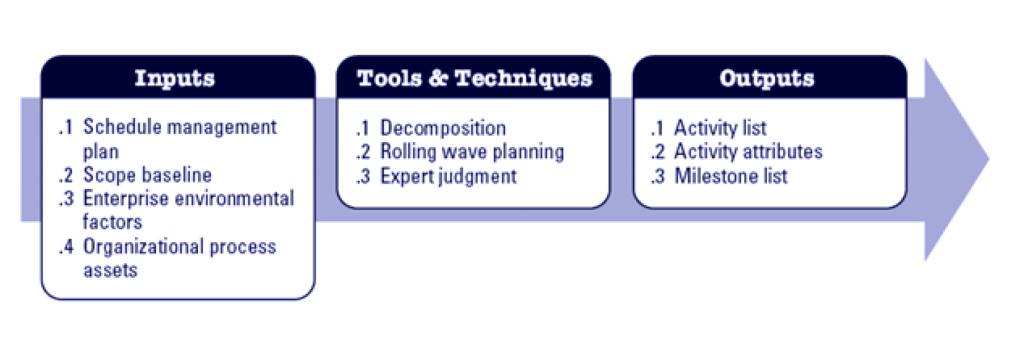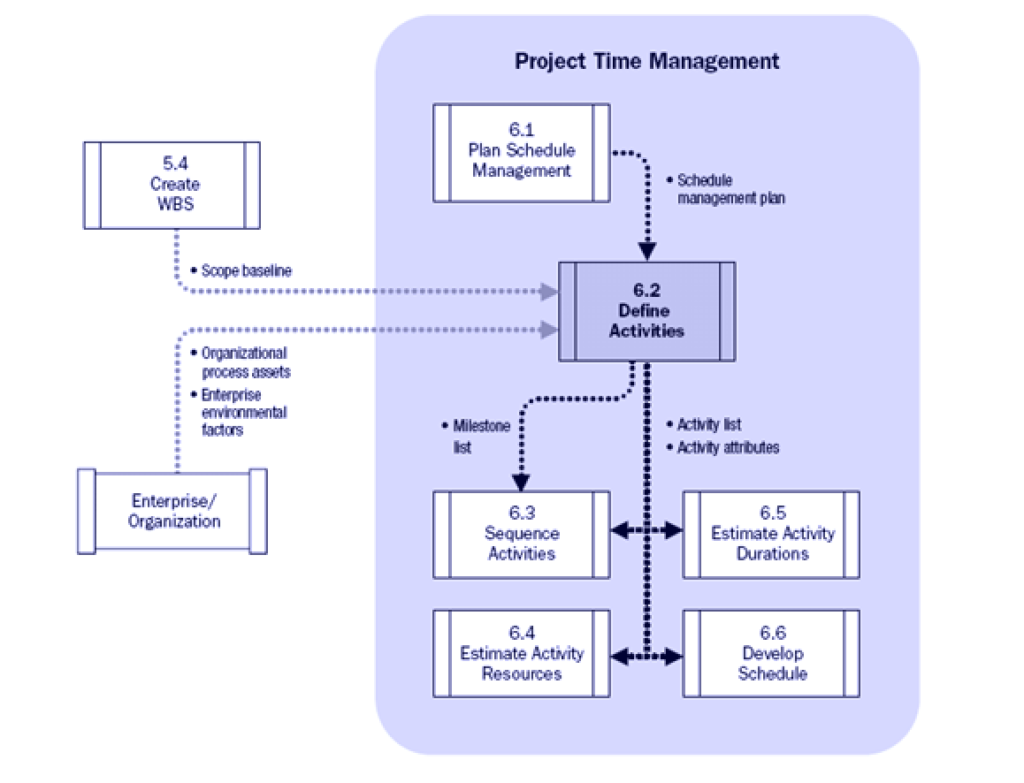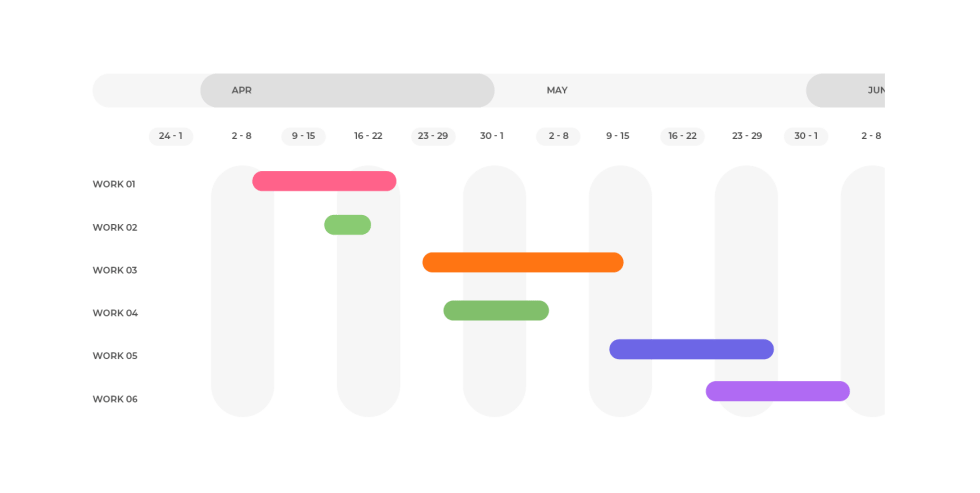Project Management Guide
Project Management Guide
What Is Project Management?
What Is a Project?
Why Is Project Management Important?
Project Life Cycle Phases
- Project Initiation
- Project Planning
- Project Execution
- Project Monitoring
- Project Closure
Project Management Methodologies
- Waterfall Project Management
- Critical Path Method
- Critical Chain Project Management
- Agile Project Management
- Scrum Project Management
- Kanban Project Management
- Lean Project Management
- Six Sigma Project Management
- PRINCE2
- PRiSM
- PMBOK Method
Project Management FAQ
Project Management Guide
Project Management Guide
What Is Project Management?
What Is a Project?
Why Is Project Management Important?
Project Life Cycle Phases
- Project Initiation
- Project Planning
- Project Execution
- Project Monitoring
- Project Closure
Project Management Methodologies
- Waterfall Project Management
- Critical Path Method
- Critical Chain Project Management
- Agile Project Management
- Scrum Project Management
- Kanban Project Management
- Lean Project Management
- Six Sigma Project Management
- PRINCE2
- PRiSM
- PMBOK Method
Project Management FAQ
What is an Activity in Project Management?
Once you prepare your work breakdown structure, the next logical step would be to define project activities. In simple words, you need to follow a bottom-up approach to identify the project deliverables and to exercise scope and cost management. But before you carry out this extensive exercise and involve all your team members, it is essential to get your basics right by understanding the concept of work activity and the process of creating one.
What is an Activity?
An activity in project management is a stage of the project management plan. It is the lowest level of the project work breakdown structure and is a sub-division of work packages.
An Activity contains a list of tasks or actions to be taken in a particular order to convert an input into the appropriate output. It is characterized by a distinct beginning and an end, which marks the commencement and completion of the activity. Activities also have a corresponding timeframe, within which it needs to be completed.
The successful and time-bound completion of the tasks listed under an activity culminates into the completion of the said activity, which moves the project forward.
What is the Role of an Activity in Project Management?
It is a well-known fact that planning and management is crucial component of a project’s success. Techniques like the work breakdown structure offer finer control, paired with a high degree of management, to drive the project towards its goals.
Activity, by virtue of breaking down a high-level goal into a low-level objective, which further divides into a set of tasks and sub-tasks required to achieve it, grants the project manager granular control over everything.

As such, the role of an activity can be summarized as follows:
- Project activities clearly describe all the identified tasks of a project component or project deliverables, and the project manager accordingly delegates responsibility to team members for its completion.
- Assigning responsibility to project teams also fixes accountability for the completion of the activity.
- It helps in defining the scope and timeline of a project at a micro-level. The overall project scope and timeline to completion is an aggregation of these values calculated at the activity stage.
- Project managers can bank on activities to make resource and project scheduling decisions, which are based on the existing interdependencies and the level of priority.
- Project activities lay the foundation for determining the project schedule.
- The individual outputs of every activity contribute to the project scope and deliverables.
- Tracking any activity through the project management software that uses network diagrams or Gantt charts for visualization, allowing for the real-time assessment of the project progress.
- It serves as a project baseline, which helps with project management activities, such as scope management, cost management, time management, and so on.
In a nutshell, an activity is the smallest unit of project management that breaks down work packages into actionable components. It helps in planning, tracking, and controlling the work package (and, by extension, the project as well) until its fruition.
How to Define, Plan, and Schedule Activities?
According to the PMBOK guide, define activities forms a crucial part of project management plan development. It is a process involving the identification and documentation of the specific actions that need to be performed to arrive at the project deliverables.
As a result, it guarantees that the team members do not miss out on any project scope in the deliverables that reach the customer. Furthermore, the breakdown of the work packages into smaller units also acts as a basis for estimating, scheduling, executing, controlling, and monitoring all aspects of any project.
Here is the flow for defining activities:

Preparing an Activity List
To define activities, you first need the work packages of the work breakdown structure. Other inputs that you might require to define the key benefit include the scope baseline, enterprise environmental factors, and organizational process assets.
The project manager then decomposes the work package into smaller, more manageable entities called tasks. These tasks must be big enough for the owner or manager to track their progress and completion. However, take care to not over-decompose the work package as it will result in management overheads. Plus, it will complicate the interdependencies.
Group the tasks in a logical flow to define corresponding activities. Prepare a list of all the activities, with enough room to accommodate any future client requests to maintain flexibility in your plan.
Sequencing the Activities
Once the activities are ready, you need to chart out the activity attributes, such as activity ID, activity code, WBS ID, and so on, to draw references to these. Then, using these pointers, you have to sequence these in the order of their priorities and interdependencies using a project management software or tools like the Gantt chart. While doing so, do bear in mind that some activities are more fruitful when executed at a certain time, while others may not have such hard timelines. Factor in such constraints and opportunities that you may witness while formulating this activity sequence.
Demarcate each activity with a milestone, which depicts the successful completion of the activity. Alternatively, it can be a logical delivery point of project execution, which transfers the output of a project team to another team, department, or stakeholder.
While carrying out relationship-based sequencing, you need to maintain flexibility in your WBS to accommodate any change in customer requirements. For this purpose, you will have to employ rolling wave planning, which defines all the activities required and arranges them in the order of what needs to be done in response to the dynamic customer requirements.

Estimating Activity Resource
Just as you would have done for your core project, you need to decompose the resources as well.
List out all the resources in terms of labor, space, equipment, technology, etc., that will be required to accomplish all the tasks within the activity. Project managers will have to exercise their expert judgment while allocating resources. Apart from the primary project plan, you must also have a Plan B in place to ensure the smooth functioning of the project.
Develop Realistic Timelines
After estimating the resources required per activity, and allocating the same in the order of priority, use the activity sequence and resource allocation as a constraint to determine the individual activity duration. The duration estimate will also depend on the amount of work effort and the availability of the resources.
You can optimize the execution of the activities by scheduling independent activities that do not share resources to work in parallel – since project execution goes hand-in-hand with risks. Hence, you should have a risk management and mitigation plan ready at your disposal.
Examples of Activities in Project Management
For the sake of consistency and simplicity, let us consider the standard example of building a house. The work breakdown structure for this project would look somewhat like this:
I. Primary Structure of a House
a. Developing the Foundation
1. Topographical survey of the area
2. Creating a foundational layout
3. Excavations
4. Concrete pour
b. Building the External Walls
c. Developing the Roof
II. Electrical infrastructure
a. Mapping
b. Wiring
c. Fitting terminals
III. Plumbing infrastructure
a. Create piping layout
b. Fit the fixtures
c. Check the water pressure
IV. Interior development
a. Building walls and features
b. Finishing – such as painting, etc.
c. Furnishing
Here, the standalone processes like “pouring the concrete” serve as a work package. This work package gets decomposed into the following activities:
- Procure raw materials
- Mix the concrete
- Churn the mixture
- Pour it into the excavation
The final step acts as the milestone that denotes the completion of the activity.
Conclusion
Project activities are the building blocks of your project. Dedicate the time and effort to clearly define activities as they can later serve as a template for future projects. However, you must first ensure that you possess all the resources and data at hand to deliver the desired results.
